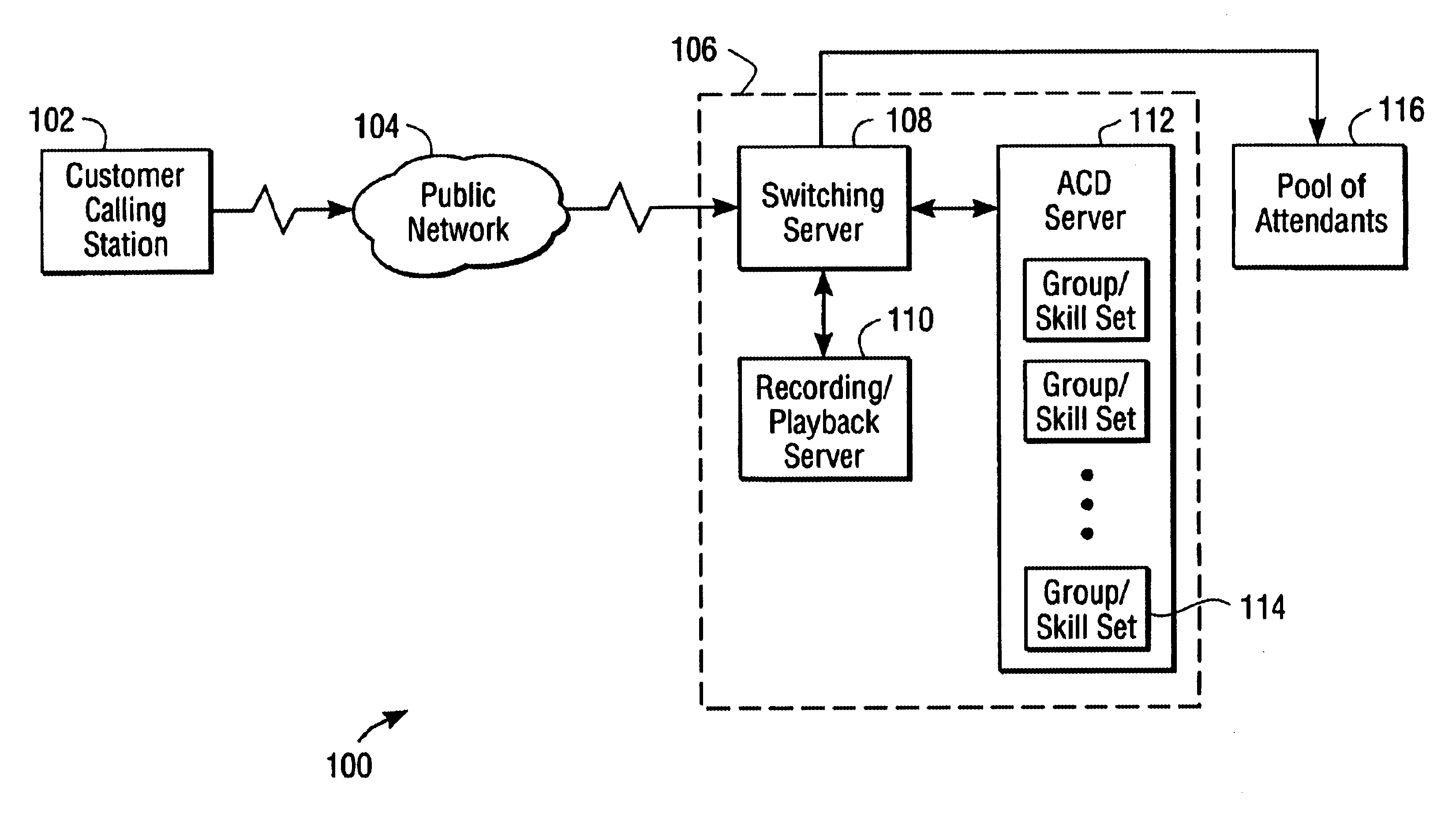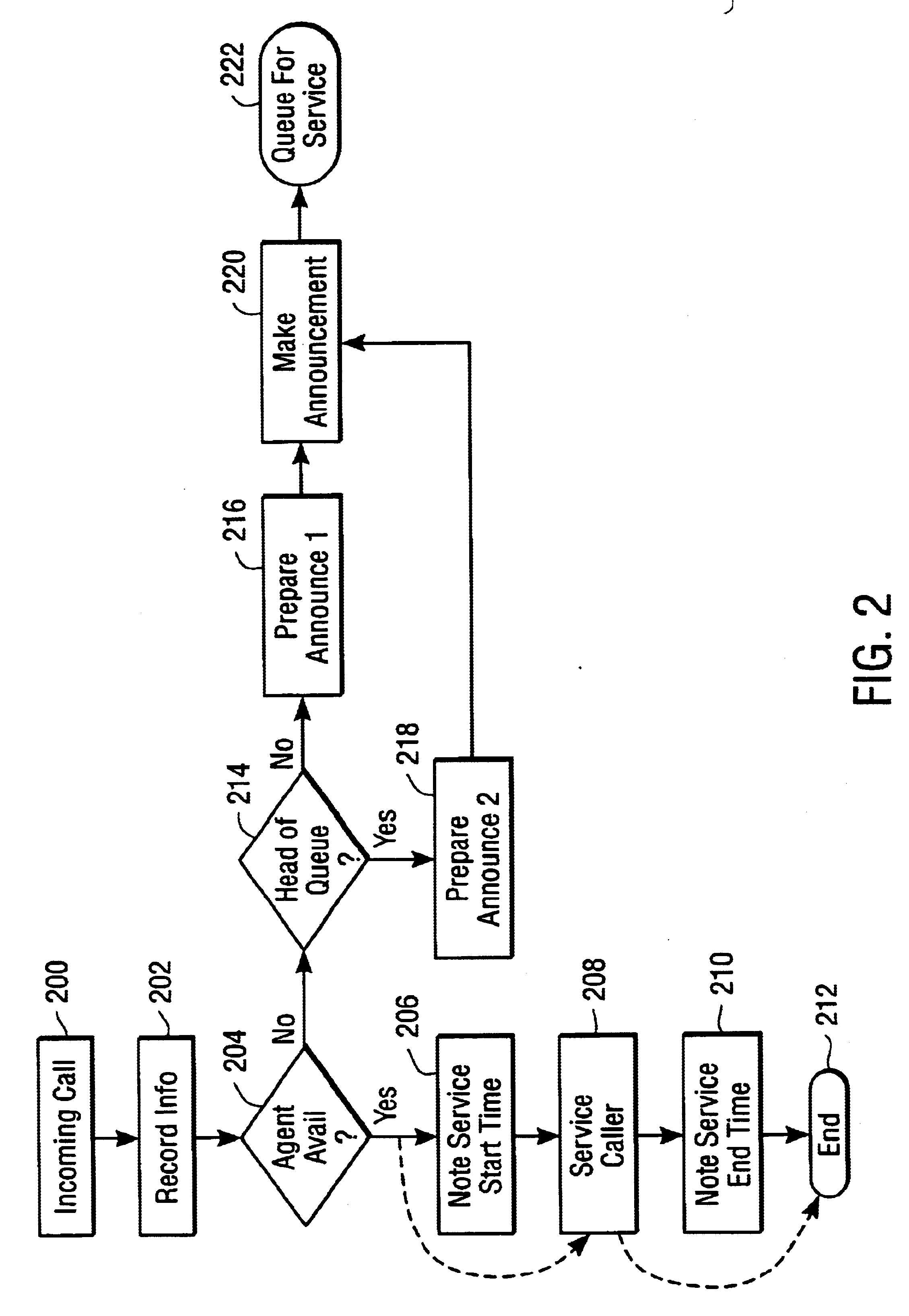System and method for implementing wait time estimation in automatic call distribution queues
a technology of automatic call distribution and wait time estimation, which is applied in the field of system and method for implementing wait time estimation in automatic call distribution queues, can solve the problems of increasing the complexity of the algorithm calculating ewt, estimating may not accurately reflect the caller's average wait time, and the wait time spoken for the primary group is inaccurate for the caller
- Summary
- Abstract
- Description
- Claims
- Application Information
AI Technical Summary
Benefits of technology
Problems solved by technology
Method used
Image
Examples
Embodiment Construction
Having discussed the present invention--together with its operating environment--in its broadest outline, one specific embodiment of the present invention will now be discussed. It will be appreciated that the scope of the present invention should not be limited by the disclosure of this particular embodiment; but that the scope of the present invention contemplates the broader scope as given in its entirety herein.
Abbreviations / Terminology
Here are some of the abbreviations used in this embodiment:
ACD: Automatic Call Distribution. A method by which calls are distributed to agents waiting to answer calls.
ART: ACD Routing Table. A set of programmable steps that determine the flow of a call through a call center.
BQA: Basic Queue Announcement. An announcement given by an IVR to a caller waiting in an ACD queue.
EWT: Estimated Wait Time. An estimate of how long a caller would have to wait before being answered by a live agent.
ORTL: Open Real Time Link. A Siemens protocol / application link ...
PUM
 Login to View More
Login to View More Abstract
Description
Claims
Application Information
 Login to View More
Login to View More - R&D
- Intellectual Property
- Life Sciences
- Materials
- Tech Scout
- Unparalleled Data Quality
- Higher Quality Content
- 60% Fewer Hallucinations
Browse by: Latest US Patents, China's latest patents, Technical Efficacy Thesaurus, Application Domain, Technology Topic, Popular Technical Reports.
© 2025 PatSnap. All rights reserved.Legal|Privacy policy|Modern Slavery Act Transparency Statement|Sitemap|About US| Contact US: help@patsnap.com



